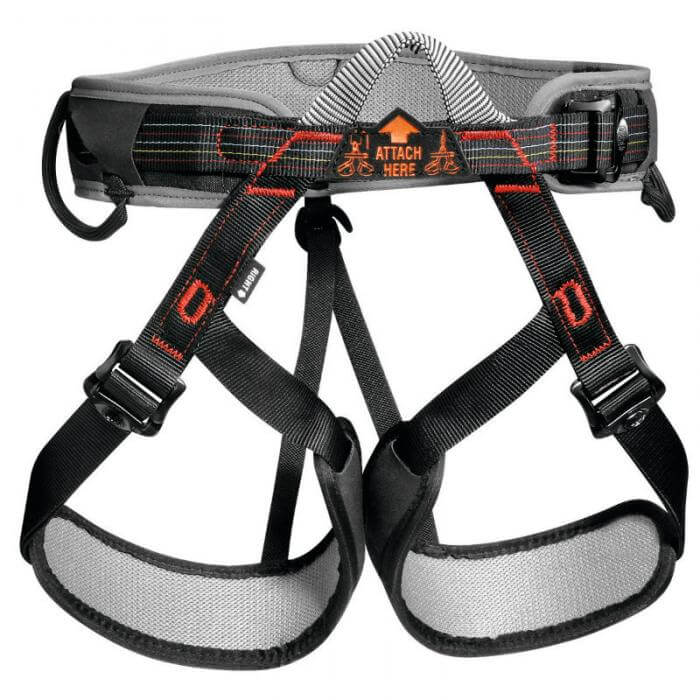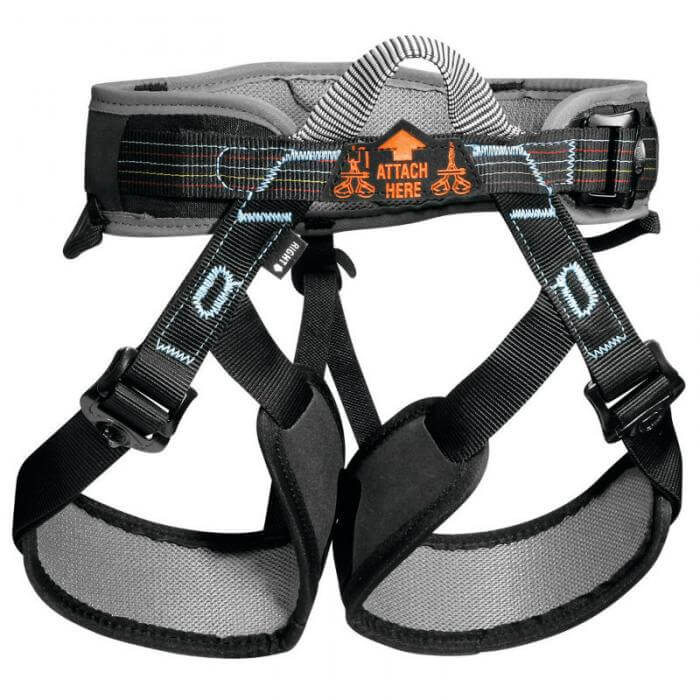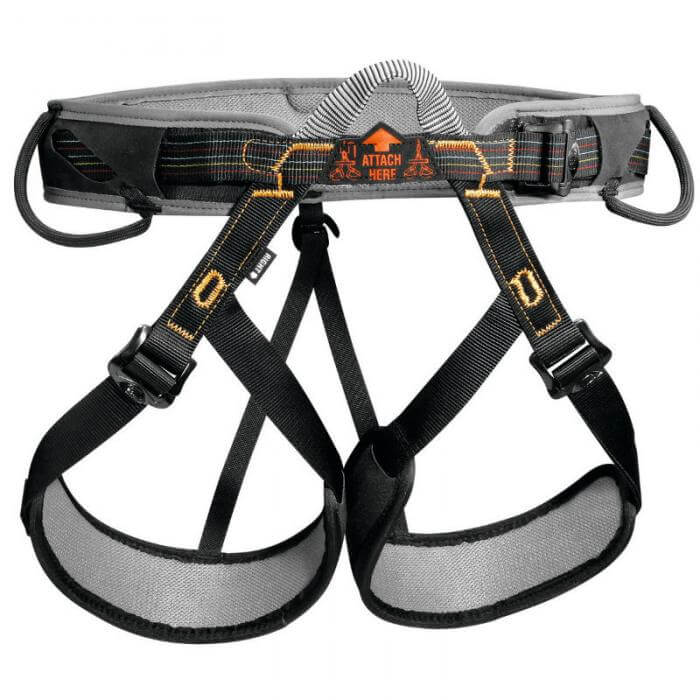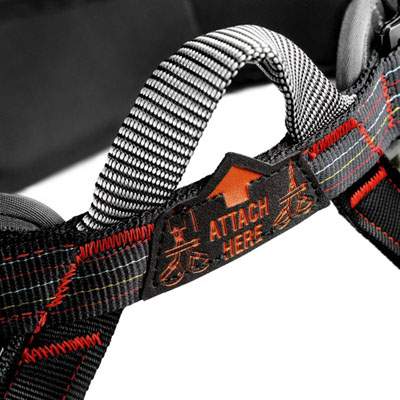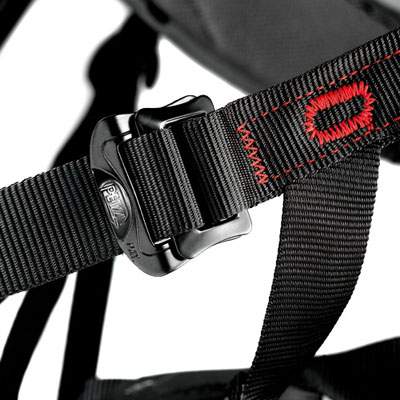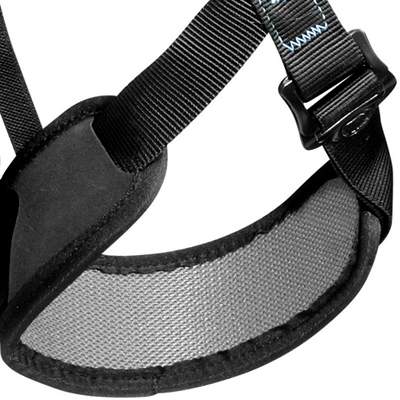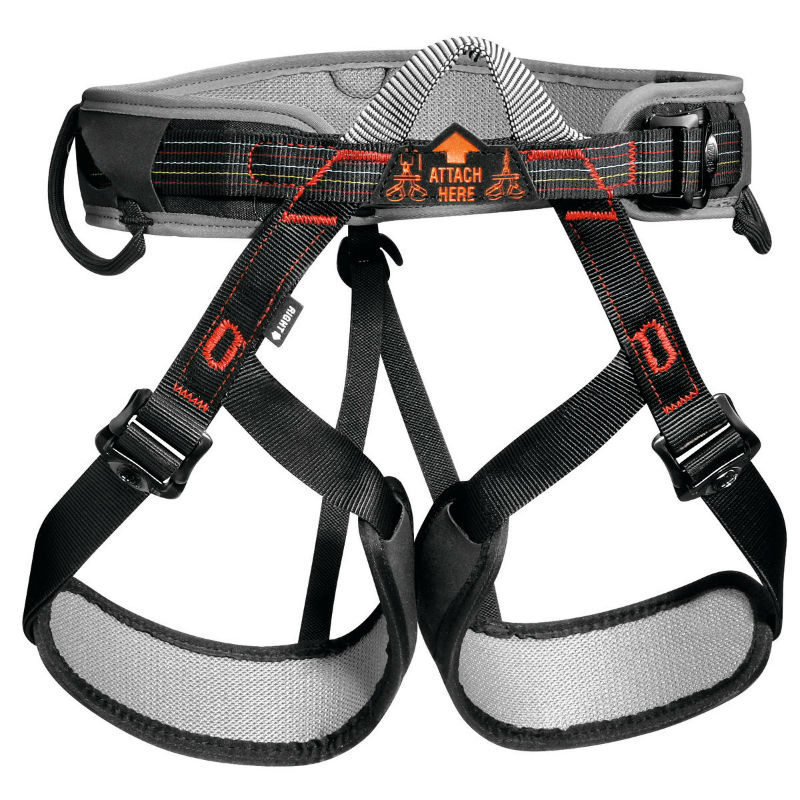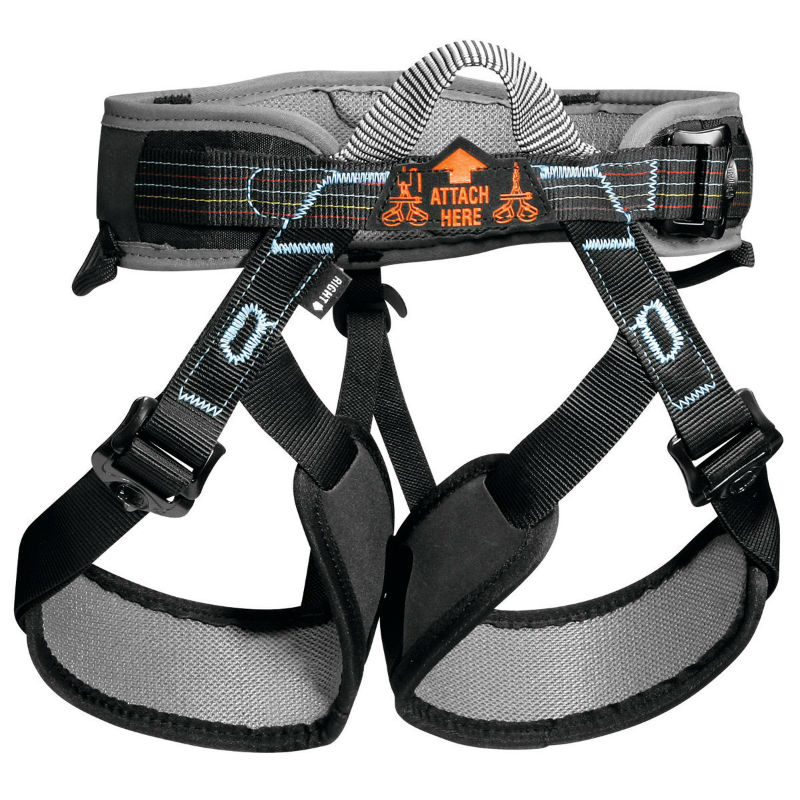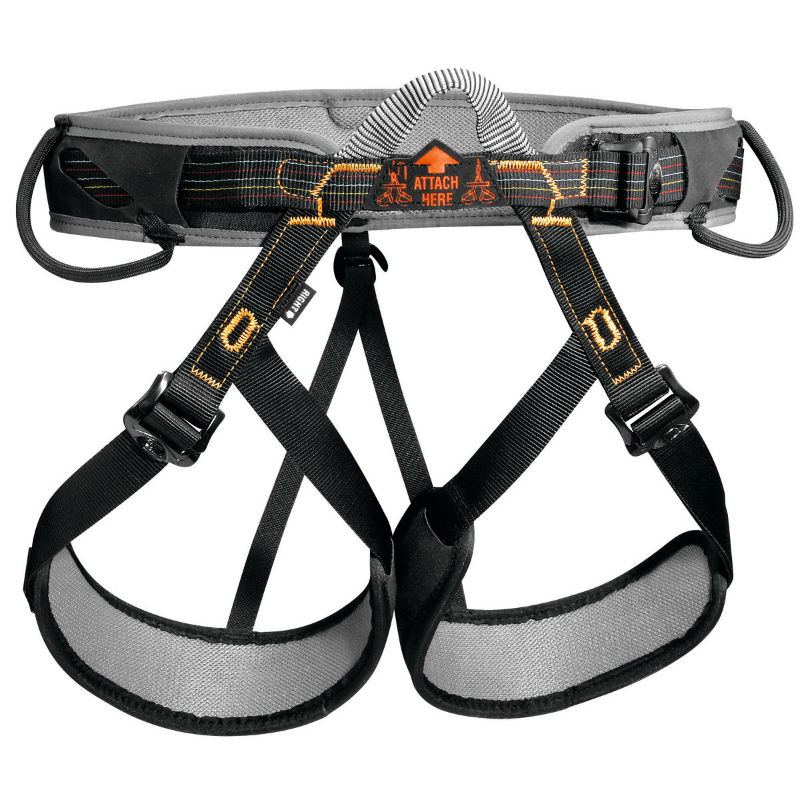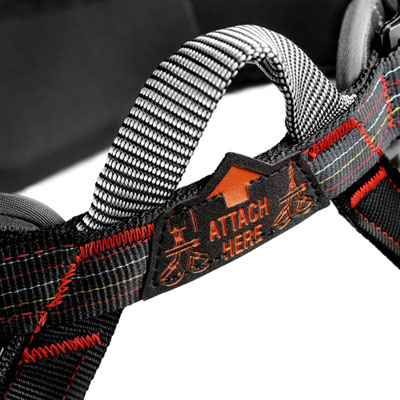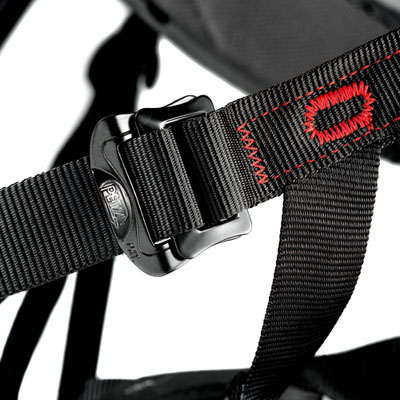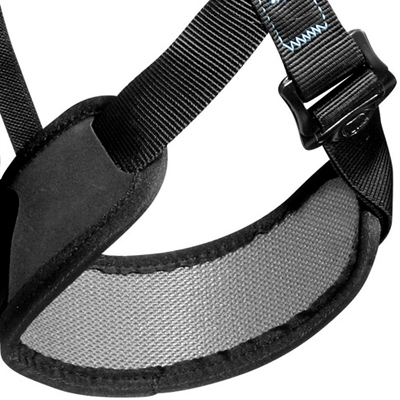How to correctly use Petzl harness, inspection, donning and setup with instructional pictures.
Aspir
Description
The ASPIR is a comfortable harness that offers many of the advantages of our high-end harnesses: padded waistbelt and leg loops, a reinforced tie-in point and equipment loops. Its low bulk and large range of adjustability also make it great for mountaineering and glacier travel. A great harness too for via ferrata and adventure parks.
High-density foam leg loops and waistbelt with soft lining are comfortable with minimal bulk
Adjustable leg loops allow size to be adjusted depending on comfort desired or layers of clothing worn and permit the harness to be put on when wearing skis or crampons
DoubleBack buckles are pre-threaded and adjust quickly with a single pull, helping to ensure proper closure
Single Dyneema-reinforced tie-in point for increased durability
Two flexible equipment loops stay out of the way while wearing a pack
Detachable elastic leg loop straps
Leg loops and waistbelt are color coded to facilitate donning
Sizes are color coded for easy equipment management for guide services and group programs
Retail price
This Product is Hard to Find.
We don’t know where you can buy this item online in the US. We’ll continue to check all the major retailers and will update this page as soon as we find one.
If you know where to find this online in the US, let us know, and we’ll add the link.
Weight (g)  WeightIn grams, the weight, as stated by the manufacturer/brand. If there are differences in weight (due to multiple sizes or optional accessories) we'll list them here. The default weight is the middle-most size, often this is size M. | 420 g Size 0 : 420 g / 14.8 oz |
| Fit | Unisex |
| Sizes | XXS, XS, S, M, L, XL, XXL, 1 Size Fits All |
Gear Loops  Number of Gear LoopsGear loops are used to hold gear (quickdraws, cams, etc) onto your harness. 4 gear loops is most common. 
0 - 1 Gear LoopsMost often on full body harnesses or guide/gym style harnesses. 2-3 Gear LoopsMostly found on lighter harnesses made for [ski] mountaineering or high-end sport climbing where weight is a high priority. 4 - 5 Gear LoopsThe standard/most common number for climbing harnesses. Perfect for sport and trad. More Than 6 Gear LoopsDesigned for long multi-pitch and big wall climbing, found on harnesses made to hold the maximum amount of gear. Worth ConsideringOccasionally, the number of gear loops will change on a harness model depending on the size. There could be 7 gear loops for the med/large but only 5 gear loops for the xsmall/small. In this case we list the highest number for the filters, and then write an explanation on the product page like, “Size S/XS can only fit 5 gear loops.” | 2 Gear loops |
Ice Clip Slots  Ice Clip SlotIce clipper slots are made to fit a carabiner that holds ice screws. These slots are generally only used by ice climbers but there is no disadvantage to having them on your harness. 
Less than 40% of harnesses will have ice clipper slots. And those harnesses will usually have 2 or 4 slots, often located next to, or between, the gear loops. | No, 0 |
| Belay / Tie-In | Tie-In |
| Waist Buckle Type | Manual Doubleback |
| Leg Buckle Type | Manual Doubleback |
| Drop Seat | Yes |
Haul Loop  Haul LoopTrad climbers often look for a haul loop as they're intended to haul a rope (second line) or pack (while you climb the chimney). 
A haul loop can also hold shoes or other accessories. Although not the intended use, it is also commonly used to hold a chalk bag. | No (0kN) |
| Certification | CE, UIAA |
| Size Chart | Size 0 |
No reviews yet.
Warning: This video is dubbed in English. If you're getting antsy, skip to section 7:40-8:15 for one of the most interesting parts, where they show a hardware specific camera inspection.
Describes with words and helpful photos, how to protect your harness.
Size chart of Petzl Aspir

